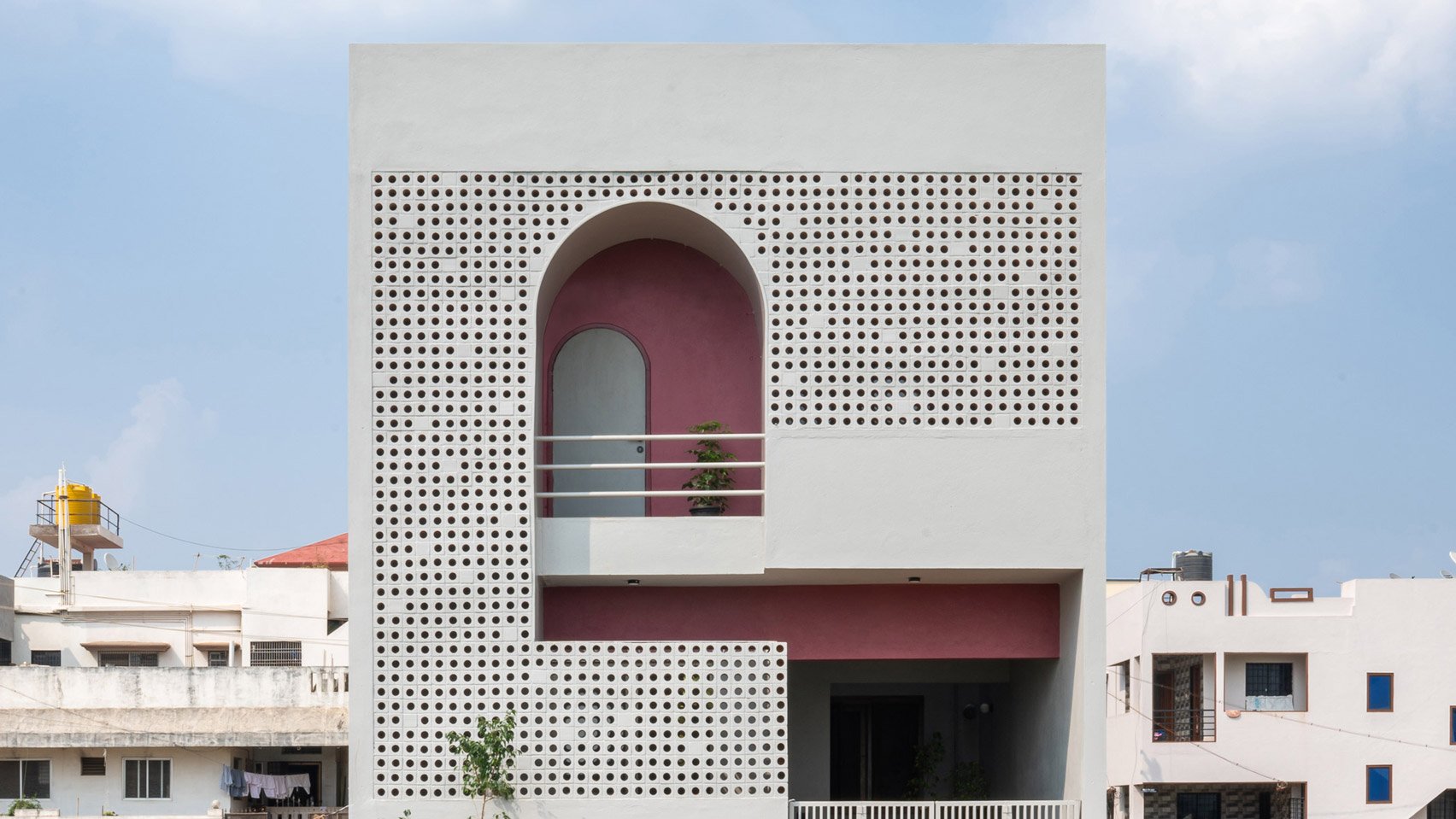Porous Adobe is a compact family home named after its perforated earth facade, completed by architecture studio Rahul Pudale Design on a narrow plot in India.
Its constrained site, which measures just six metres in width and 15 metres in depth, is opened up by a series of courtyards that help maximise access to natural light, ventilation and greenery.
According to Rahul Pudale Design, this inward-looking layout is also intended to mitigate the impact of future developments that will enclose the plot in Belagavi.
“The client, in transition from their rental accommodation, brought forth fundamental needs reflective of a growing family of four,” explained studio director Rahul Pudale.
“The client was keen on providing double-height spaces with green courtyards, which would maximise light and ventilation and create interconnected spaces,” Pudale continued.
“The courtyards not only infuse the interior with natural light but also facilitate cross-ventilation and spaces for interaction.”
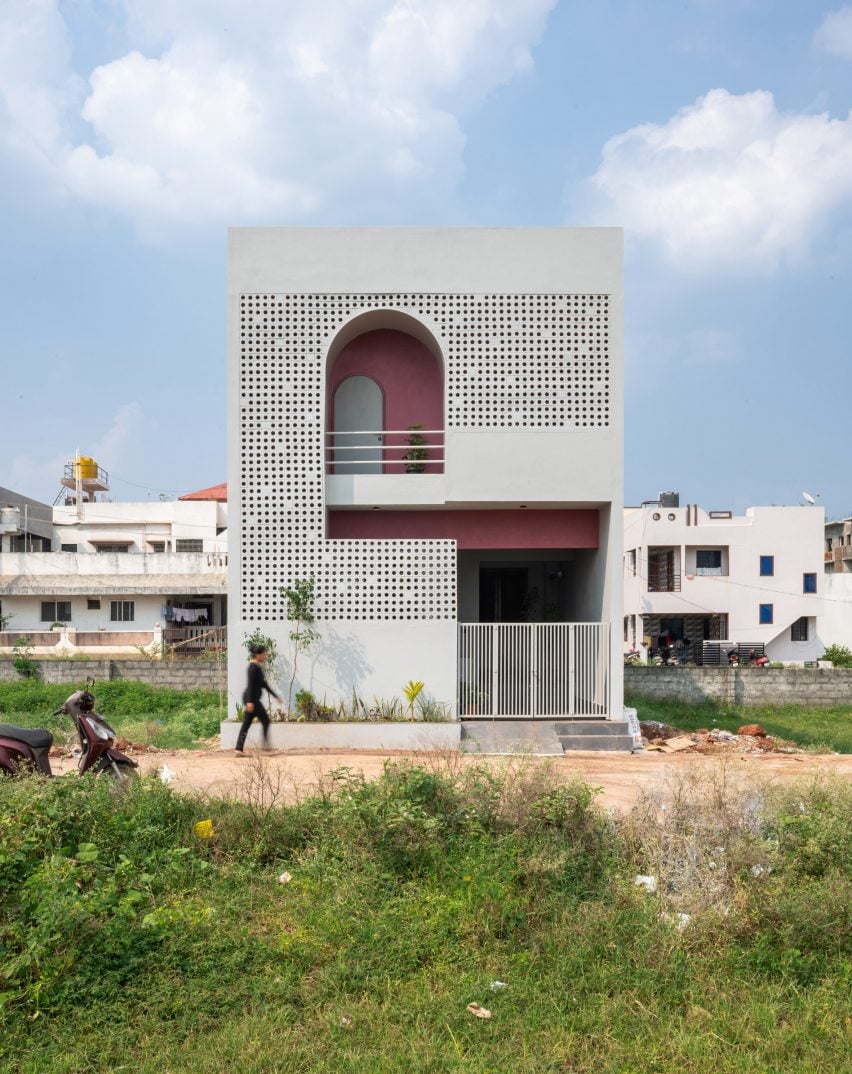
A key feature of Porous Adobe is its perforated facade, which is made from adobe – a building material made from earth, water and organic binding materials such as straw.
This wraps around the south-facing exterior coated in white plaster and is designed to help cool the building while lending a distinctive texture and character.
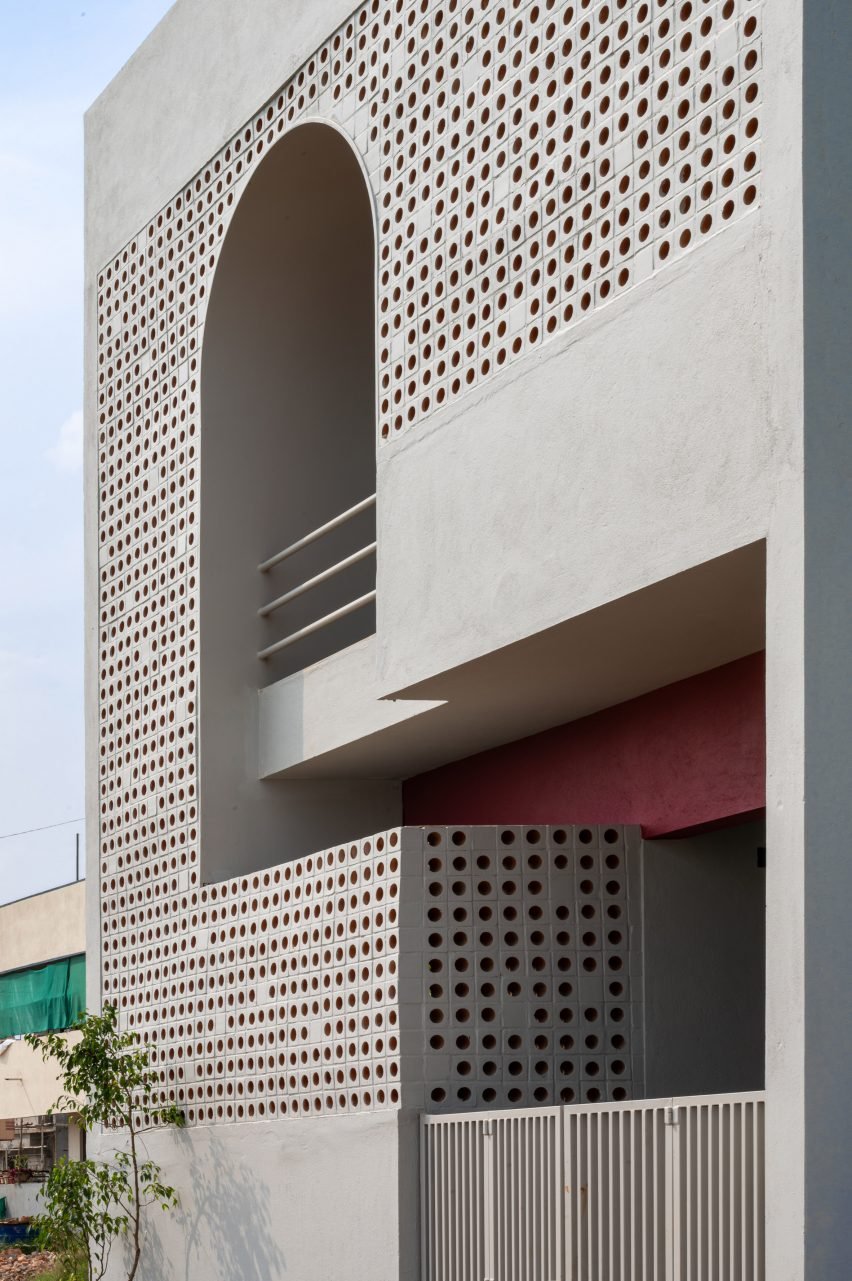
“[The facade] effectively mitigates the heat gained from the south-facing exposure while adding a distinctive aesthetic character to the building,” said Pudale.
“The perforations allow for controlled light penetration and air circulation, contributing to passive cooling strategies that reduce reliance on mechanical systems.”
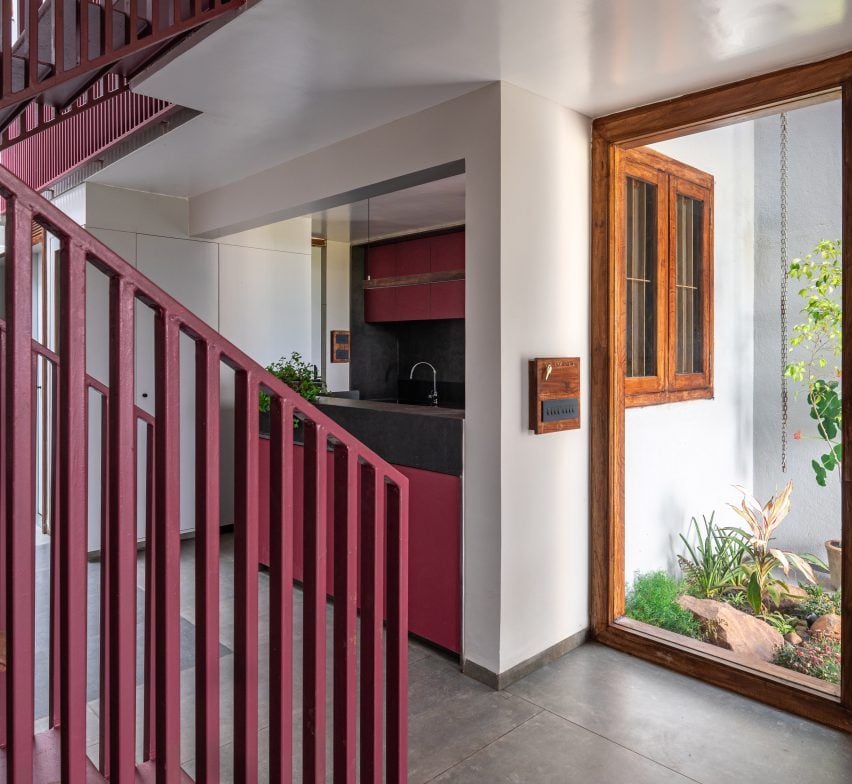
Upon entering Porous Adope, visitors are welcomed by a double-height courtyard that opens into a generous open-plan area with a kitchen, dining area and living room.
To the rear, an ensuite bedroom and bathroom are separated from the main living area by an additional green courtyard for privacy.
Grounding the living area, a sleek metal staircase coated in bold magenta leads up to the primary sleeping areas on the first floor as well as a rooftop terrace.
The layout of the bedrooms is designed to “maximise interaction spaces” for the growing family, with the rear-facing room overlooking the dining courtyard and the front-facing room offering views of the entrance area.
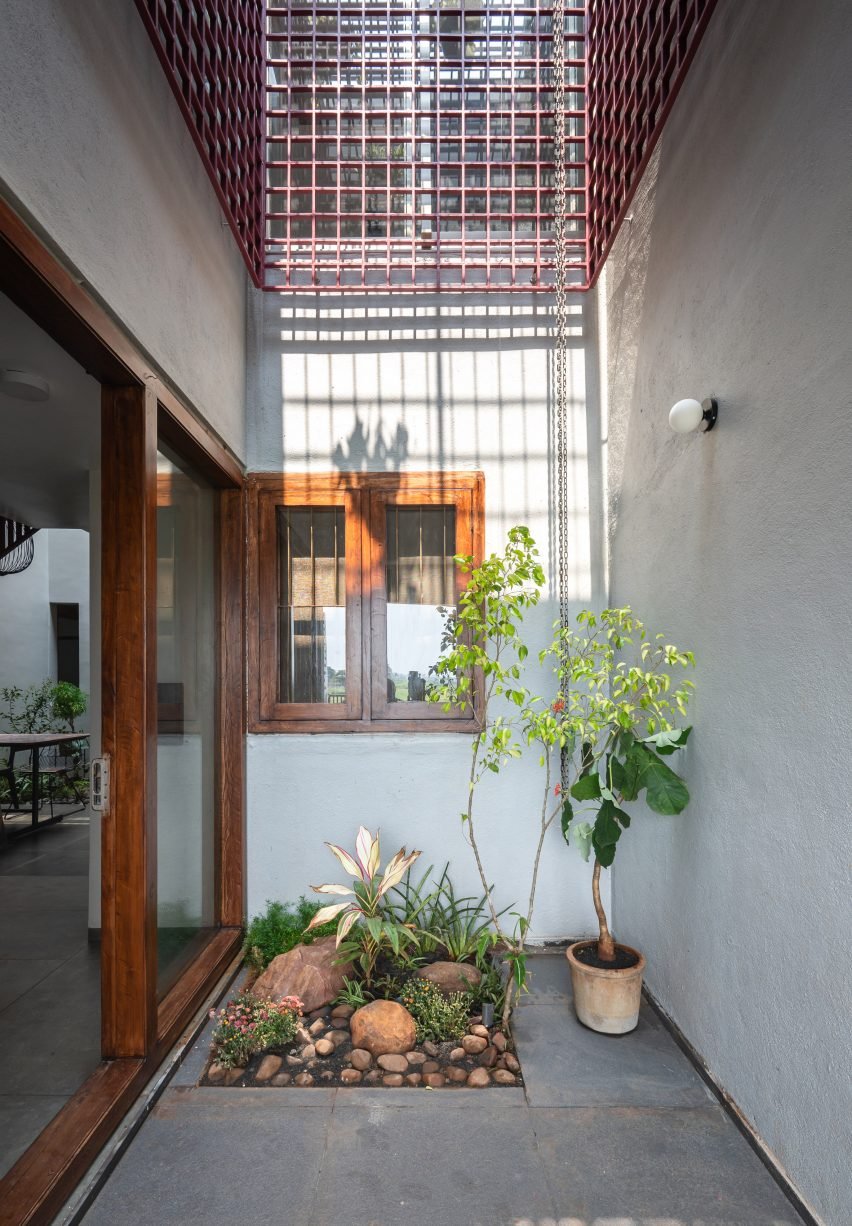
Throughout the interior, a palette of grey tones is punctuated by accents of magenta, marble surfaces and decorative elements, designed to add “visual depth” and unify the living spaces.
To facilitate connections to the outside, all functional spaces in the home link to a courtyard.
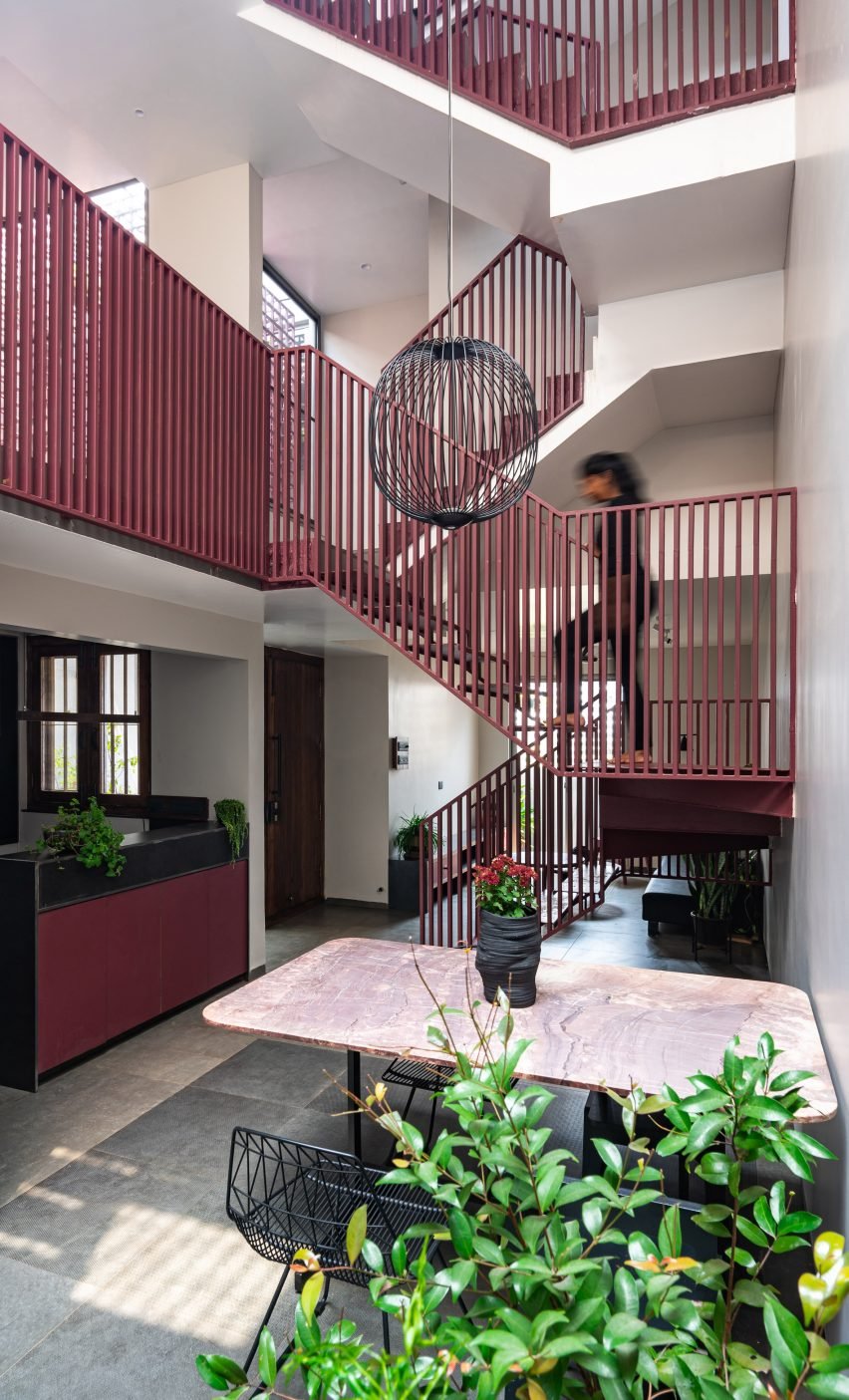
Rahul Pudale Design is an architecture studio based in Karnataka, India.
Perforated facades often feature in buildings in tropical locations to help provide passive ventilation, with previous examples on Dezeen including the Terra Cotta Workshop in Vietnam and Small Houses in Cambodia.
The photography is by Atik Bheda.

